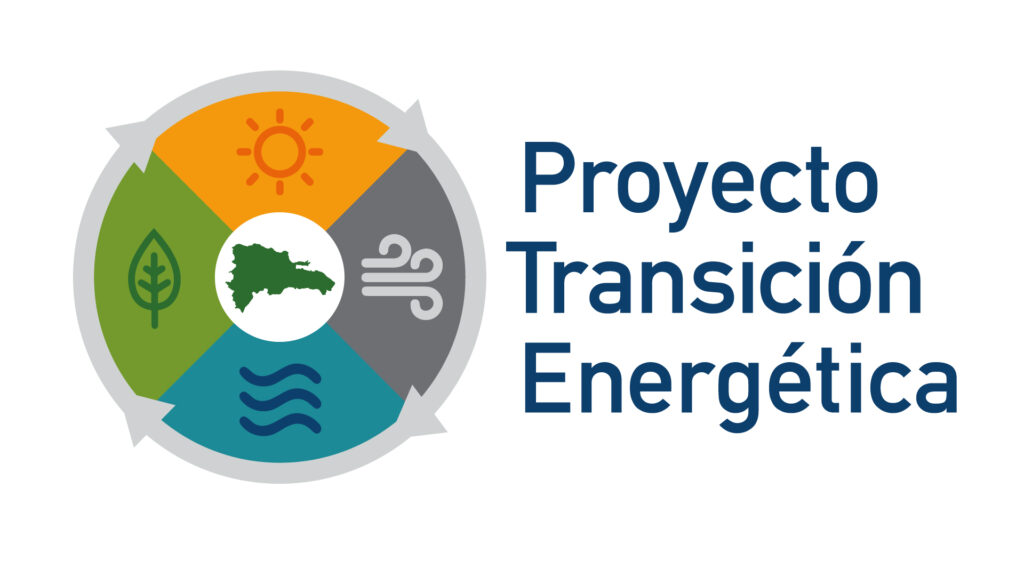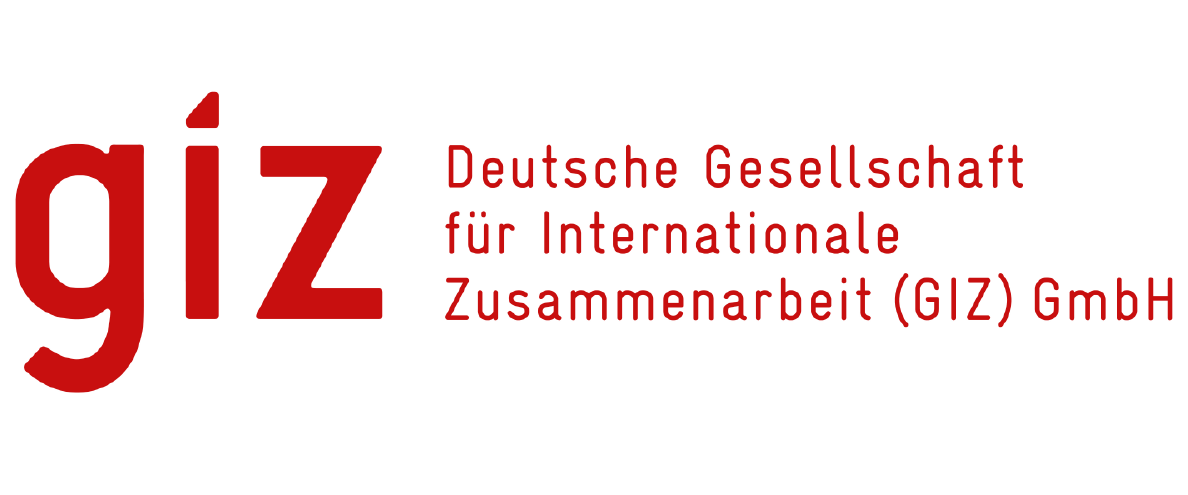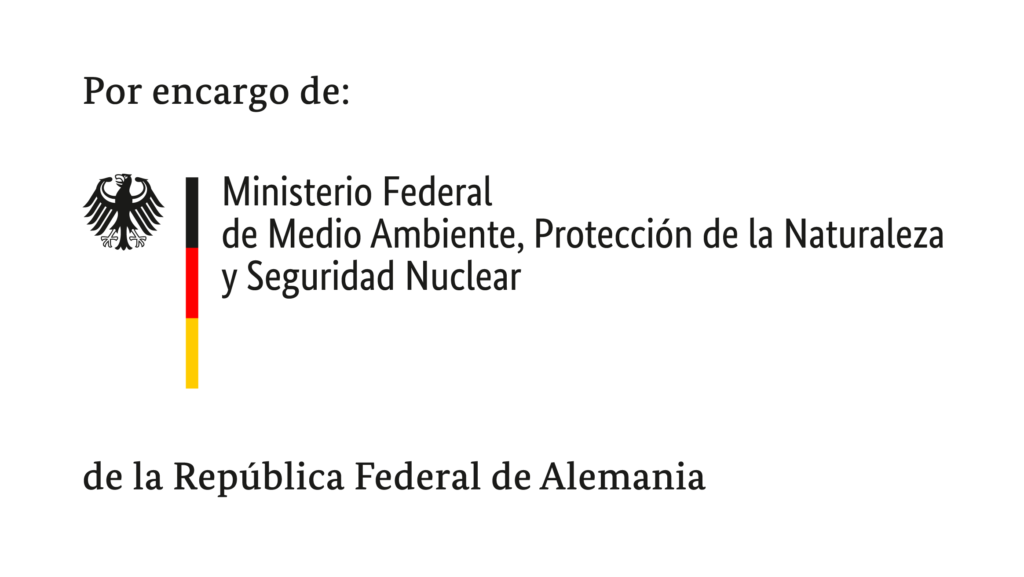Analysis on the maximum PV penetration levels in Dominican distribution grids
Distribution Grid Study in the Dominican Republic
The introduction of net metering policies in the Dominican Republic has led to an increasing number of rooftop PV systems. However, restrictive policies, limiting the PV capacity in MV circuits to 15% of peak demand, hinder further PV development.
The aim of the study was therefore to calculate the actual limitations of distribution networks with regard to PV expansion and give recommendations on updated distribution system operator (DSO) planning procedures and regulatory oversight. To this end, a PV distribution system study was conducted on a careful selection of distribution networks, looking at the impact of PV on MV networks, including the potential to increase PV hosting capacity through improved operation principles and technologies, such as enhanced voltage control, reactive power control by PV inverters and battery storage.
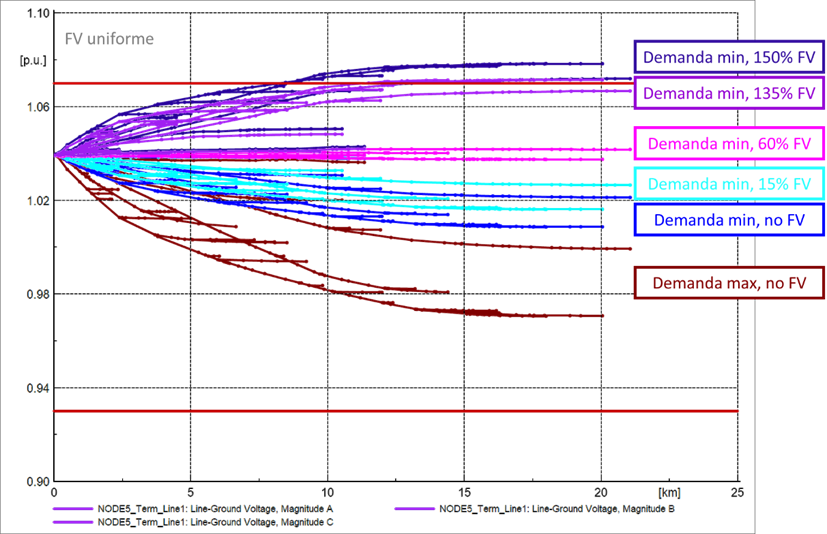
Voltage issues on a distribution feeder with increasing share of PV penetration levels
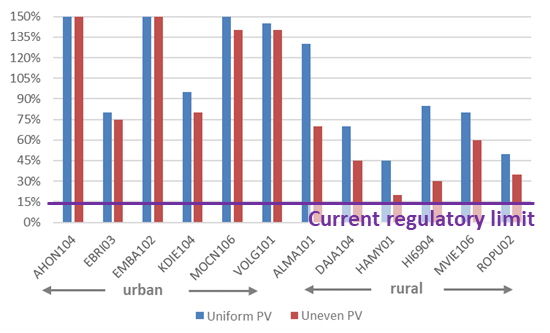
Maximum technical penetration levels for PV as well as the current regulatory limit at 15% of a feeder‘s peak demand. Most feeders show significantly higher PV penetration limits as regulated.
The technical results showed that the hosting capacity is significantly higher in most feeders than the current 15% of peak demand limit. Therefore, technical recommendations with regard to the maximum achievable PV penetration levels in different types of distribution feeders were drafted. Furthermore, regulatory recommendations on the interconnection process and grid code design were drafted, suggesting to replace the current 15% threshold through a hosting capacity process. This way, the maximum allowed PV penetration on a feeder is much closer aligned with the actual technical limitations, which reduces barriers for PV growth while at the same time respecting the distribution system operator’s desire to limit network reinforcement costs.
The investigations were accompanied by multiple online webinars with live interpretation to foster capacity building for distribution system operators and regulators, as well as an outreach workshop for PV developers.
This study was implemented in partnership between GET.transform and the Energy Transition Project, executed by GIZ on behalf of Federal Ministry for the Environment, Nature Conservation and Nuclear Safety (BMU), as part of the International Climate Initiative (IKI).
See also:
Online training for Dominican DSOs and Policy Makers
Final report (English)
Final report (Spanish)
Implemented on behalf of:

